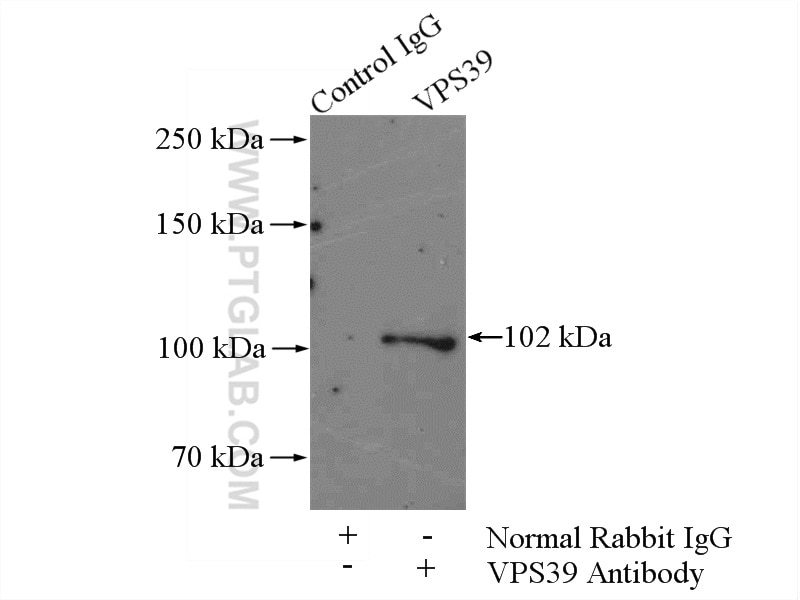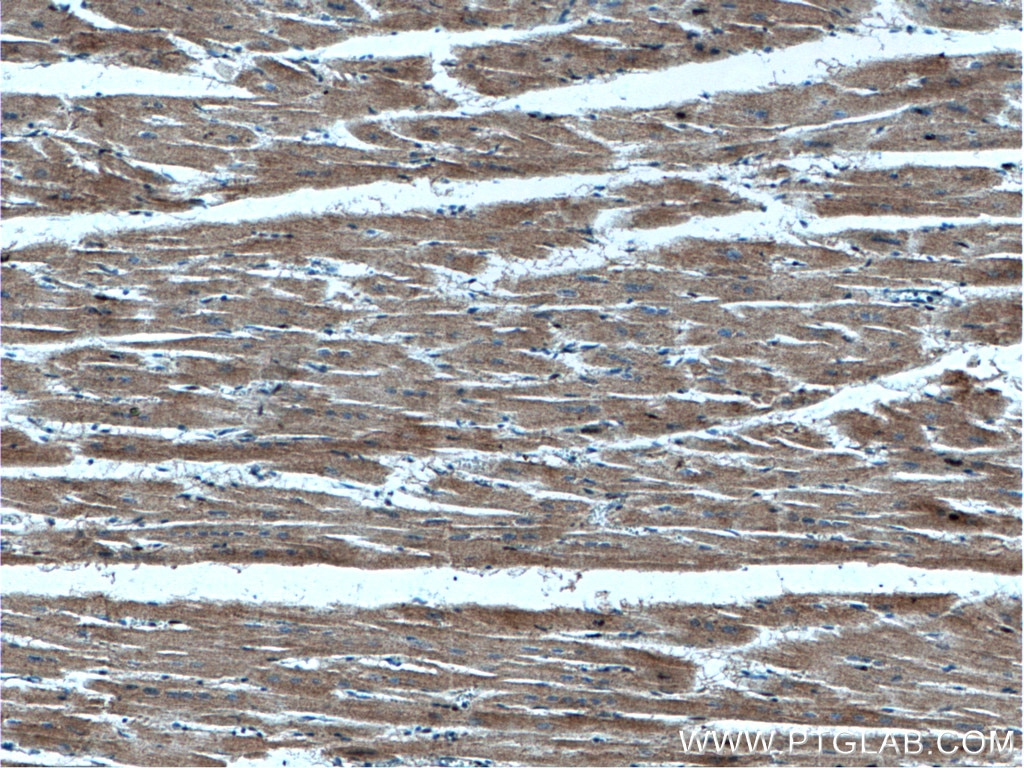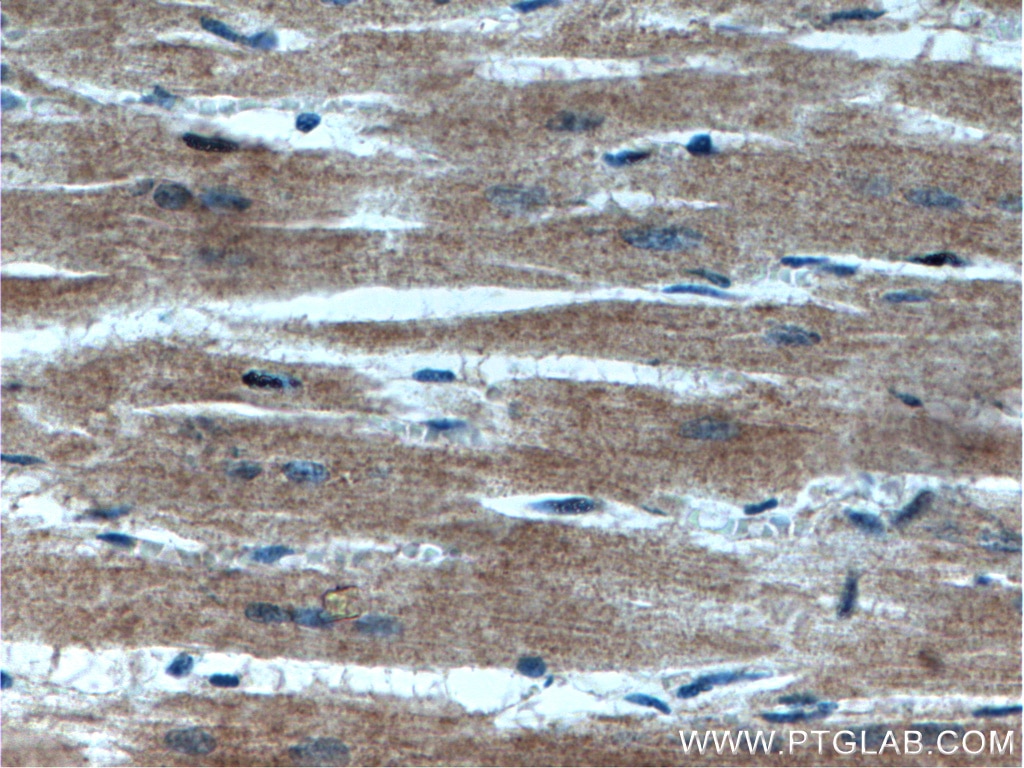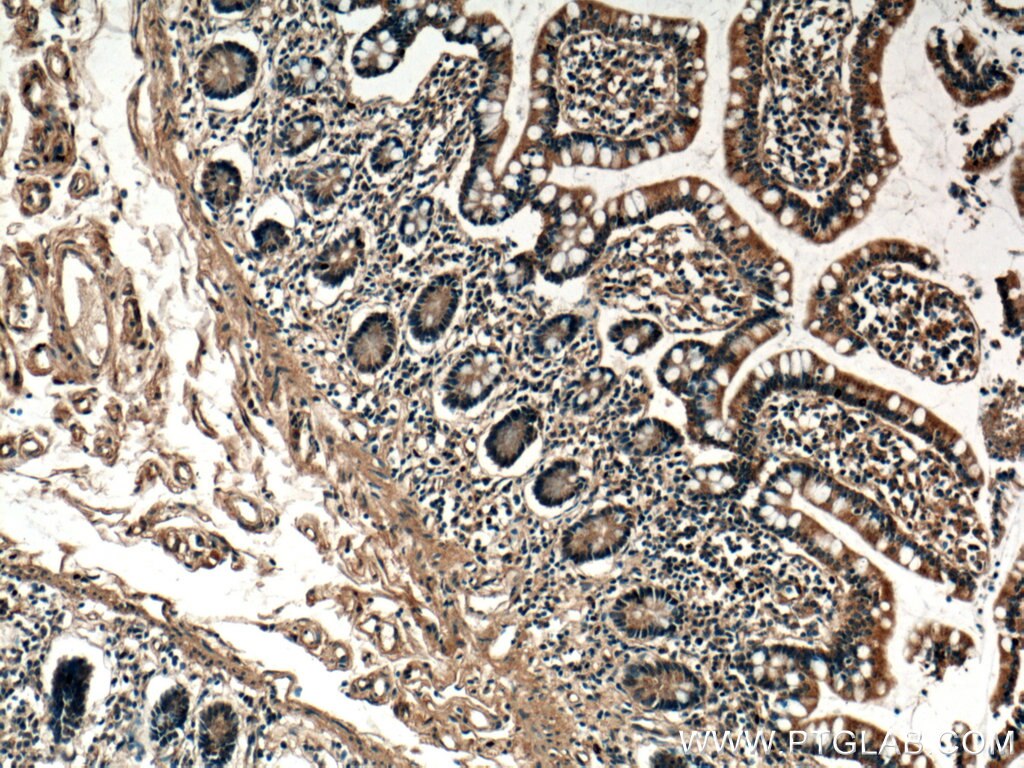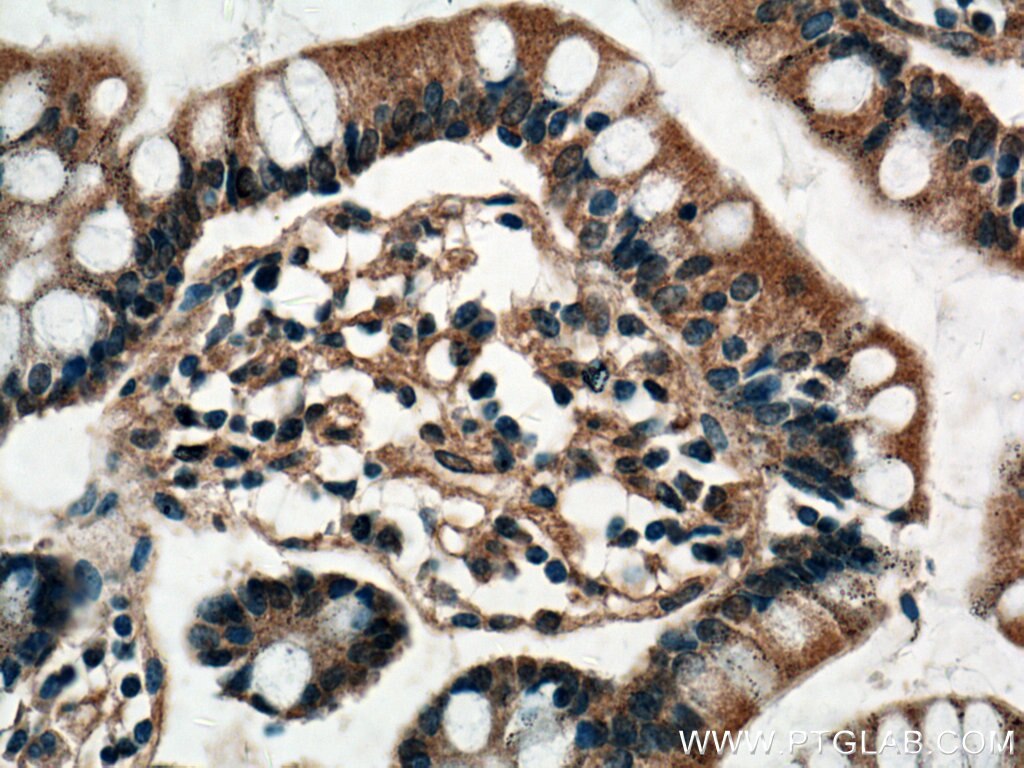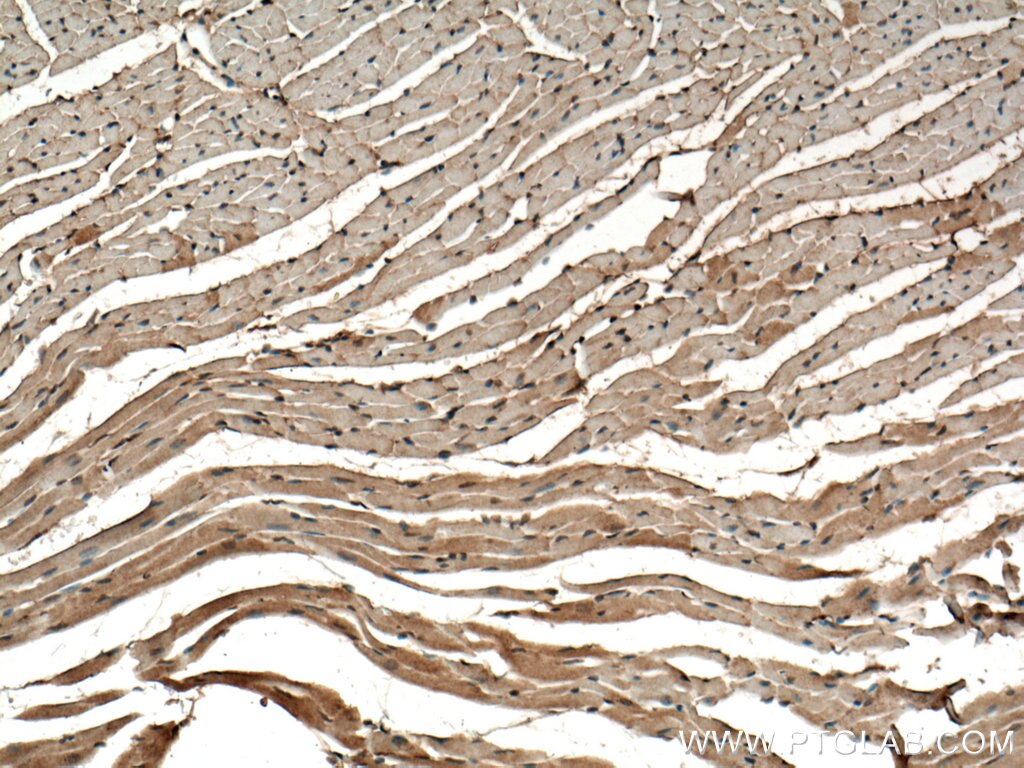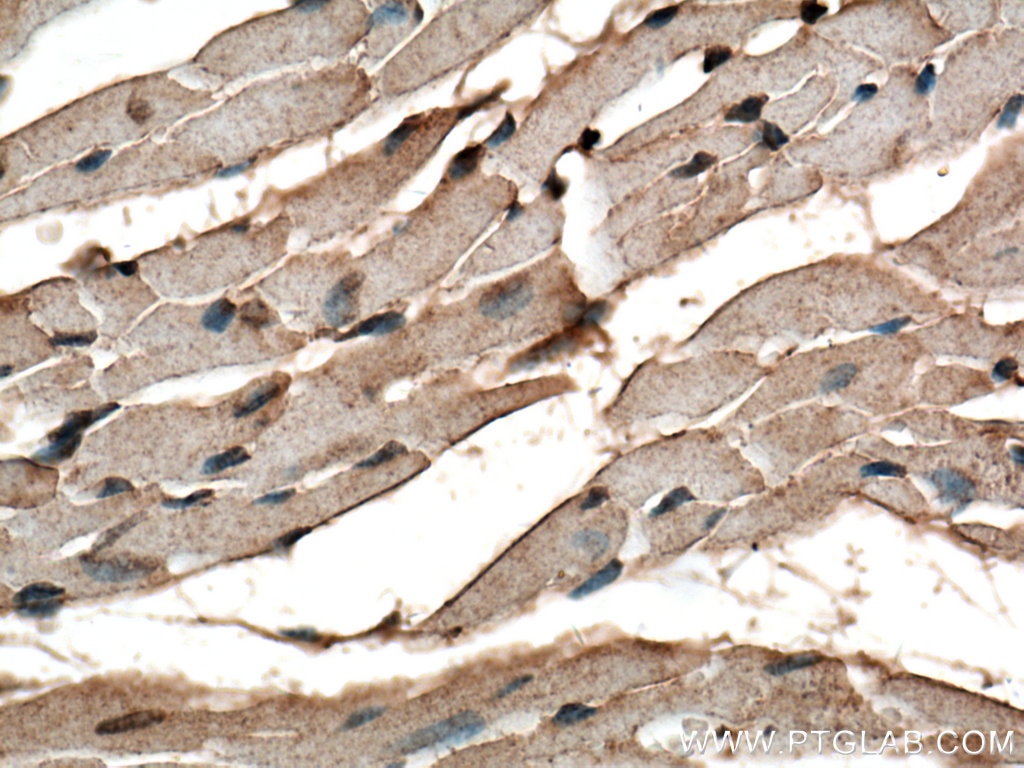- Phare
- Validé par KD/KO
Anticorps Polyclonal de lapin anti-VPS39
VPS39 Polyclonal Antibody for IP, IHC, ELISA
Hôte / Isotype
Lapin / IgG
Réactivité testée
Humain, souris
Applications
IHC, IF, IP, ELISA
Conjugaison
Non conjugué
N° de cat : 16219-1-AP
Synonymes
Galerie de données de validation
Applications testées
| Résultats positifs en IP | tissu cérébral de souris |
| Résultats positifs en IHC | tissu cardiaque humain, tissu cardiaque de souris, tissu d'intestin grêle humain il est suggéré de démasquer l'antigène avec un tampon de TE buffer pH 9.0; (*) À défaut, 'le démasquage de l'antigène peut être 'effectué avec un tampon citrate pH 6,0. |
Dilution recommandée
| Application | Dilution |
|---|---|
| Immunoprécipitation (IP) | IP : 0.5-4.0 ug for 1.0-3.0 mg of total protein lysate |
| Immunohistochimie (IHC) | IHC : 1:50-1:500 |
| It is recommended that this reagent should be titrated in each testing system to obtain optimal results. | |
| Sample-dependent, check data in validation data gallery | |
Applications publiées
| KD/KO | See 1 publications below |
| IF | See 4 publications below |
| IP | See 2 publications below |
Informations sur le produit
16219-1-AP cible VPS39 dans les applications de IHC, IF, IP, ELISA et montre une réactivité avec des échantillons Humain, souris
| Réactivité | Humain, souris |
| Réactivité citée | Humain, souris |
| Hôte / Isotype | Lapin / IgG |
| Clonalité | Polyclonal |
| Type | Anticorps |
| Immunogène | VPS39 Protéine recombinante Ag9267 |
| Nom complet | vacuolar protein sorting 39 homolog (S. cerevisiae) |
| Masse moléculaire calculée | 886 aa, 102 kDa |
| Poids moléculaire observé | 102 kDa |
| Numéro d’acquisition GenBank | BC015817 |
| Symbole du gène | VPS39 |
| Identification du gène (NCBI) | 23339 |
| Conjugaison | Non conjugué |
| Forme | Liquide |
| Méthode de purification | Purification par affinité contre l'antigène |
| Tampon de stockage | PBS with 0.02% sodium azide and 50% glycerol |
| Conditions de stockage | Stocker à -20°C. Stable pendant un an après l'expédition. L'aliquotage n'est pas nécessaire pour le stockage à -20oC Les 20ul contiennent 0,1% de BSA. |
Informations générales
VPS39, also named as KIAA0770, TLP, or VAM6, is a 886 amino acid protein, which contains one CNH domain and one CHCR repeat. VPS39 belongs to the VAM6/VPS39 family and localizes in the cytoplasm. VPS39 is widely expressed, with highest levels in heart, skeletal muscle, kidney, pancreas, brain, placenta and spleen. VPS39 may play a role in clustering and fusion of late endosomes and lysosomes. VPS39 modulates the transforming growth factor-beta response by coupling the transforming growth factor-beta receptor complex to the Smad pathway.
Protocole
| Product Specific Protocols | |
|---|---|
| IHC protocol for VPS39 antibody 16219-1-AP | Download protocol |
| IP protocol for VPS39 antibody 16219-1-AP | Download protocol |
| Standard Protocols | |
|---|---|
| Click here to view our Standard Protocols |
Publications
| Species | Application | Title |
|---|---|---|
Nat Commun C9orf72-catalyzed GTP loading of Rab39A enables HOPS-mediated membrane tethering and fusion in mammalian autophagy | ||
Cell Host Microbe Global mapping of Salmonella enterica-host protein-protein interactions during infection. | ||
Autophagy SDC1-dependent TGM2 determines radiosensitivity in glioblastoma by coordinating EPG5-mediated fusion of autophagosomes with lysosomes | ||
Autophagy Atractylenolide I inhibits angiogenesis and reverses sunitinib resistance in clear cell renal cell carcinoma through ATP6V0D2-mediated autophagic degradation of EPAS1/HIF2α | ||
Dev Cell ORF3a of SARS-CoV-2 promotes lysosomal exocytosis-mediated viral egress
| ||
Curr Biol Cellular mechanotransduction relies on tension-induced and chaperone-assisted autophagy. |
